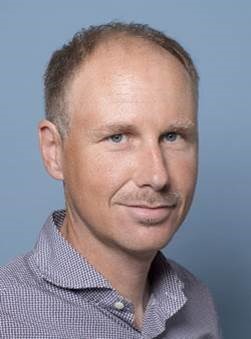Compressive Ultrasound Imaging
Abstract: Three-dimensional ultrasound is a powerful imaging technique, but it requires thousands of sensors and complex hardware. The discovery of compressive sensing has shown that the signal structure can be exploited to reduce the burden posed by traditional sensing requirements. In this talk, we will give an overview of how compressive sensing can be used in ultrasound imaging. As an extreme example, we have designed a simple ultrasound imaging device that can perform three-dimensional imaging using just a single ultrasound sensor. Our device makes a compressed measurement of the spatial ultrasound field using a plastic aperture mask placed in front of the ultrasound sensor. The aperture mask ensures that every pixel in the image is uniquely identifiable in the compressed measurement. Similar masks can also be used on existing ultrasound arrays to increase their coverage from two-dimensional to three-dimensional. Furthermore, we will discuss optimal mask designs as well as specialized algorithms that can reduce the complexity and memory requirements of the state of the art reconstruction methods. We demonstrate our designs with real experiments and illustrate that compressive ultrasound imaging can pave the way for cheaper, faster, simpler and smaller sensing devices with possible new clinical applications.
Date and Time
Location
Hosts
Registration
-
 Add Event to Calendar
Add Event to Calendar
- Rice University
- 6100 Main Street
- Houston, Texas
- United States 77005
- Building: Duncan Hall
- Room Number: Room 1070
- Contact Event Hosts
-
Prof. Joseph Cavallaro, cavallar@rice.edu
- Co-sponsored by Rice University ECE Department Seminar
Speakers
Geert Leus of Delft University of Technology
Compressive Ultrasound Imaging
Abstract: Three-dimensional ultrasound is a powerful imaging technique, but it requires thousands of sensors and complex hardware. The discovery of compressive sensing has shown that the signal structure can be exploited to reduce the burden posed by traditional sensing requirements. In this talk, we will give an overview of how compressive sensing can be used in ultrasound imaging. As an extreme example, we have designed a simple ultrasound imaging device that can perform three-dimensional imaging using just a single ultrasound sensor. Our device makes a compressed measurement of the spatial ultrasound field using a plastic aperture mask placed in front of the ultrasound sensor. The aperture mask ensures that every pixel in the image is uniquely identifiable in the compressed measurement. Similar masks can also be used on existing ultrasound arrays to increase their coverage from two-dimensional to three-dimensional. Furthermore, we will discuss optimal mask designs as well as specialized algorithms that can reduce the complexity and memory requirements of the state of the art reconstruction methods. We demonstrate our designs with real experiments and illustrate that compressive ultrasound imaging can pave the way for cheaper, faster, simpler and smaller sensing devices with possible new clinical applications.
Biography:
Bio: Geert Leus received the M.Sc. and Ph.D. degree in Electrical Engineering from the KU Leuven, Belgium, in June 1996 and May 2000, respectively. Geert Leus is now a Full Professor at the Faculty of Electrical Engineering, Mathematics and Computer Science of the Delft University of Technology, The Netherlands. His research interests are in the broad area of signal processing, with a specific focus on wireless communications, array processing, sensor networks, and graph signal processing. Geert Leus received the 2021 EURASIP Individual Technical Achievement Award, a 2005 IEEE Signal Processing Society Best Paper Award, and a 2002 IEEE Signal Processing Society Young Author Best Paper Award. He is a Fellow of the IEEE and a Fellow of EURASIP. Geert Leus was a Member-at-Large of the Board of Governors of the IEEE Signal Processing Society, the Chair of the IEEE Signal Processing for Communications and Networking Technical Committee, the Chair of the EURASIP Technical Area Committee on Signal Processing for Multisensor Systems, a Member of the IEEE Sensor Array and Multichannel Technical Committee, a Member of the IEEE Big Data Special Interest Group, a Member of the EURASIP Signal Processing for Communications and Networking Special Area Team, the Editor in Chief of the EURASIP Journal on Advances in Signal Processing, and the Editor in Chief of EURASIP Signal Processing. He was also on the Editorial Boards of the IEEE Transactions on Signal Processing, the IEEE Transactions on Wireless Communications, the IEEE Signal Processing Letters, and the EURASIP Journal on Advances in Signal Processing. Currently, he is a Member of the IEEE Signal Processing Theory and Methods Technical Committee and an Associate Editor of Foundations and Trends in Signal Processing.
Email:
Address:Faculty of Electrical Engineering, Mathematics and Computer Science, , Delft, Netherlands
Agenda
Presentation at 4 to 5:00pm CST


